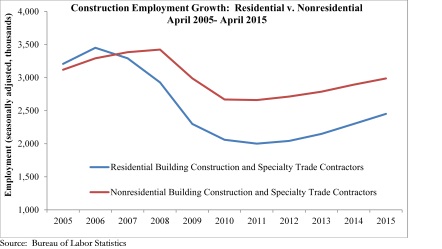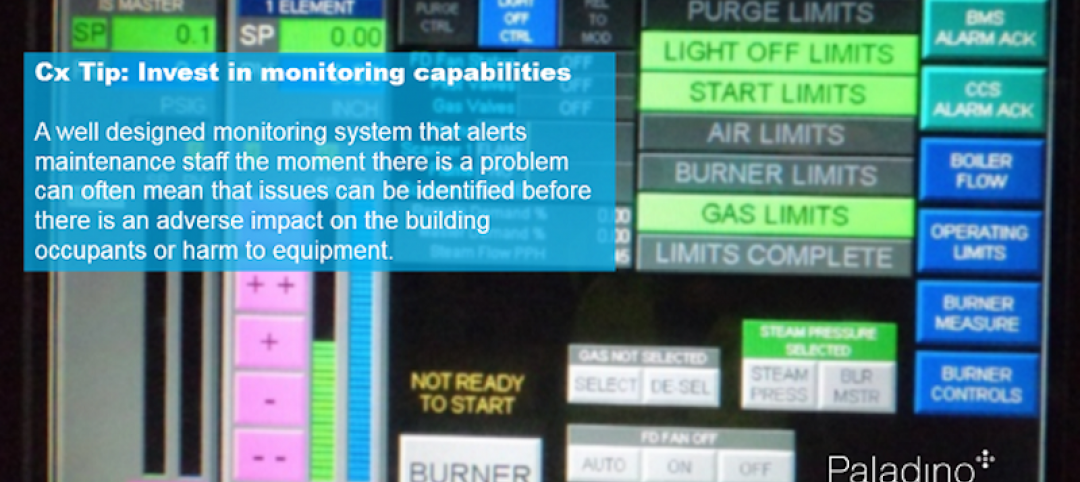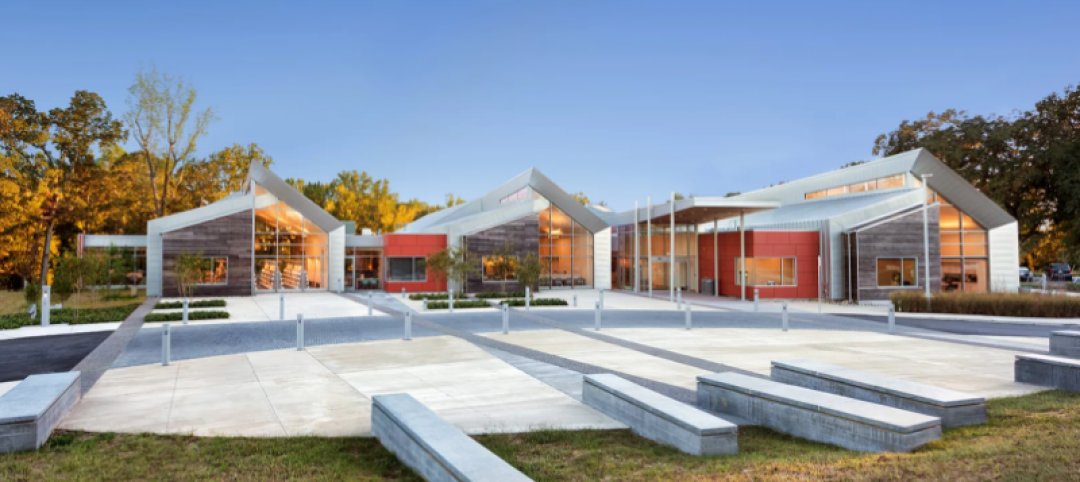A new report from the Bureau of Labor Statistics found that the U.S. construction industry added 45,000 jobs during the month of April. According to Associated Builders and Contractors, nonresidential construction employment rose by 12,400 jobs in April while nonresidential specialty trade contractors added 20,200 new jobs following a loss of 9,000 jobs in March.

The following is a breakdown of construction employment in April:
• Nonresidential building construction employment fell by 7,800 jobs for the month but is up by 16,600 jobs (2.4 percent) from the same time last year.
• The heavy and civil engineering construction segment added 8,400 jobs in April and employment is up by 33,100 positions (3.6 percent) year-over-year.
• Residential building construction employment expanded by 2,800 jobs in April and is up by 41,200 jobs (6.3 percent) on an annual basis.
• Residential specialty trade contractors added 20,800 net new jobs in April and has added 102,400 jobs (6.8 percent) since April 2014.
• Nonresidential specialty trade contractors added 20,200 jobs for the month and employment in that category is up by 76,400 jobs (3.5 percent) from the same time last year.
Mining and logging lost 15,000 net jobs in April after gaining jobs in every month during 2014. This sector lost more jobs during the first quarter of 2015 (-48,000) than it added in all of 2014.
“While the broader jobs report proved better than expected, April was the best month for construction employment since January 2014,” said Associated Builders and Contractors Chief Economist Anirban Basu. “Though it may have been expected to see solid job creation performance reflected in today’s report, it is still a relief to obtain a nice piece of data. Economic data regarding retail sales, industrial production, and other elements of economic life have largely been disappointing to date and the March jobs report fell in line with that series of uninspired results. Data regarding unemployment claims strongly suggested that employers viewed the recent bout of economic weakness as temporary. The lack of new lay-off activity indicates an ongoing demand for labor and April’s reasonably strong employment gains suggest that many employers continue to search for additional staffing."
Related Stories
Building Team | Jun 23, 2017
These are the recipients of the AIA's 2017 Small Project Awards
11 projects were awarded in 2017.
Building Team | Jun 22, 2017
Seven lessons learned on commissioning projects
Commissioning is where the rubber meets the road in terms of building design.
Sponsored | Building Team | Jun 20, 2017
Plan ahead when building in the west
Getting a project through plan review can be an unusually long process, anywhere from six months to two years.
Architects | May 9, 2017
Movers + Shapers: The social connector
Studio Gang gains fans with buildings that unite people and embrace the outside world.
Sponsored | Building Team | May 8, 2017
The builder is the building: Finding the right builder
The most important factor in making sure the where, when, what, and how go smoothly is making sure you pick the right who.
Architects | May 3, 2017
Avoiding trouble in paradise: Tips on building successfully in the Caribbean
The island setting itself is at the root of several of these disruptive assumptions.
Libraries | Apr 7, 2017
Eight recipients selected for the 2017 AIA/ALA Library Building Awards
Columbus Metropolitan Library, National Library of Latvia, and Varina Area Library were all honored by the AIA and ALA.
K-12 Schools | Apr 7, 2017
Is an alternative project delivery method right for your K-12 school district?
With California’s increasingly busy—and costly—construction market, it’s becoming more difficult to predict costs with a typical design-bid-build delivery method.
Market Data | Apr 6, 2017
Architecture marketing: 5 tools to measure success
We’ve identified five architecture marketing tools that will help your firm evaluate if it’s on the track to more leads, higher growth, and broader brand visibility.
Sports and Recreational Facilities | Apr 5, 2017
Informed design: A dynamic approach to athletic facilities design
With the completion of the athletic facility upgrade—dubbed the Arden Project—students will have access to state-of-the-art facilities.
















